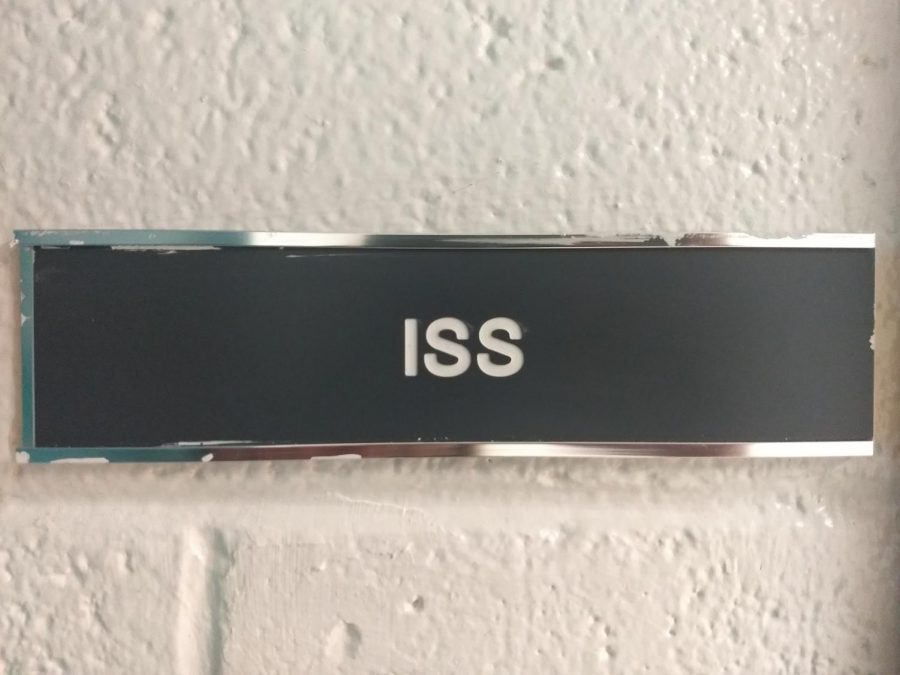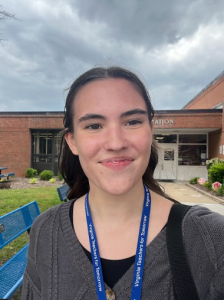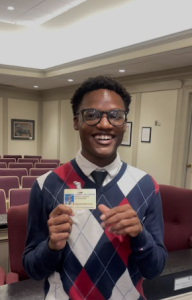School disciplinary measures disproportionately affect black students
February 27, 2019
It is difficult to ignore the abundance of cases showcasing discrimination across the United States in the school system. Numerous studies have concluded that minority students experience higher forms of punishment, and at higher rates, than their white counterparts. This is especially problematic when considering that studies have found that minority students do not engage in more problematic behaviors than their white peers, but are still being subject to more severe punishments much more often (Cheek and Bucchio).
Brookings Institution reported that in 2015, 17.8 percent of African-Americans across the nation were suspended at some point that year, while only 4.4 percent of white students were suspended at some point that year. African-American students only make up approximately 18 percent of the U.S. student population, but account for 48 percent of those being suspended and expelled from schools (Tuttle). In VBCPS during the 2017-2018 school year, black students comprised 23.8 percent of all students in VBCPS, but comprised 52.3 percent of all students who were suspended for short periods of time, and 54.9 percent of all students suspended for long periods of time (School Quality Profiles). Alarmingly, 100% of students in VBCPS that were expelled in the 2017-2018 school year were black students (School Quality Profiles).
Suspension and expulsion policies are problematic enough as it is before even throwing in the race card. Across races and ethnicities, the probability of dropping out of school increases by approximately 316 percent for students who are suspended or expelled at some point during the academic career (Pesta). While we cannot necessarily see if this same link is present at Tallwood, we know that considerably more black students are suspended and expelled than white students, and considerably more black students drop out than any other group of students. 4.7 percent of black students at Tallwood dropped out last year, with African American males dropping out more than any other group (6.5 percent).
There is an uncomfortable implication in the data. Part of the reason that black students are disciplined much more harshly and at much higher rates may be due to the implicit biases of staff members. Implicit bias refers to the unconscious but deeply-rooted attitudes that contribute to individuals holding certain stereotypes and ideas about others that ultimately affect their actions and behaviors, particularly towards members of the groups that said individuals have implicit bias towards (“Discipline and the School to Prison Pipeline”).
Dr. Avila, Tallwood Principal, explains that he hopes that staff members thoughtfully handle discipline issues.
“I would hope that all people consider the backgrounds and circumstances of others before acting or reacting. However, if a student, regardless of ethnicity, violates something in the Code of Conduct, then he or she should face an appropriate discipline, whether this be a conference or more,” states Avila.
As far as discipline goes, suspensions and expulsions are some of the first that tend to come to mind as two of the most severe punishments that schools give out. However, schools across the nation have been moving away from such disciplinary measures. Instead of suspensions, expulsions, and other such forms of punishment, Tallwood Social Studies teacher Ms. Freeman points to restorative justice–a practice that is being used more and more commonly in schools across the US–as an effective form of decreasing problematic behavior.
“If you look at successful programs, a lot of them are tied to this idea of restorative justice, where instead of disciplining the student in a reactive way, you actually have procedures that support figuring out what was wrong, what was the trigger, how can we prevent it, what counseling might be needed, what mediation might be needed, because it’s all done in a way–how do we have somebody to go back in and re-look at the situation, to evaluate it from different perspectives and point of views and considerations,” explains Freeman.
The National Education Association defines restorative practices as “processes that proactively build healthy relationships and a sense of community to prevent and address conflict and wrongdoing” (Discipline and the School-To-Prison Pipeline). This means that, instead of immediately lashing out and punishing a student who may be acting up, teachers and administrators can sit down with the student and try to understand what is going on and how they could possibly help. There are usually reasons behind a student’s actions, and focusing on restorative practices can help prevent future issues with that student, as they will feel safer and like they are a part of a broader community that has their best interests in mind.
Tallwood already does this somewhat, as staff members are required to go through a series of steps before suspending or expelling students. The Tallwood Code of Student Conduct states that students who are disciplined must first be given a verbal warning or reprimand, then they must conduct a conference with the student, parents, or both, then engage in some sort of intervention, whether that be a referral to a school counselor or psychologist, a time-out, a detention, a restriction, confiscation, probation, mediation, or something else of that sort (Code of Student Conduct).
Despite these efforts to avoid excessive punishments and move towards more restorative practices, Ms. Freeman expressed some concern over this “halfway implementation.”
“[Restorative justice] can be very successful, and a lot of the cities that have done it have been hugely successful. However, it requires a tremendous amount of professional resources and support. So, when you kind of just dump it halfway on people that are not trained counselors, not trained mediation specialists, when you don’t have the space and the time and the ability to have professionals that are trained in mediation–not a teacher who goes to some 30 minute thing–people that specialize in it, it really takes the supportive resources. A lot of times what I see is that the idea of something is implemented, but all of the stuff that you need to support it is not….I think it could be improved to practice some of those policies with the appropriate resources. Without the appropriate resources and specialists in place, the halfway institution of them is probably not going to be effective and will probably have worse consequences,” states Freeman.
Ms. Freeman went on to explain that, although teachers try their best to implement these restorative practices, none of them are adequately trained in the skills that they need in order to effectively do so, and that in order for restorative practices to actually be effective, more resources must be put into the system.
“School systems that have done it successfully have invested a lot in it, and you really see the will of providing the necessary supporting tools. I just see the will here being, ‘the data is this, so be aware,’ and expecting an outcome. That big missing thing right there is just kind of glossed over, because everyone is so immersed in the data. So, everyone just wants a change in the data, but they’re not willing to often invest in what it would truly take to change, so then you see change in the data, because people are aware, but the problems aren’t addressed. If we’re not really addressing those problems, then how are people getting assistance to modify behaviors? If we have less disciplinary actions, how are we dealing with these things? That is the missing link. What I see is that people get so driven by results, that how we get the results becomes glossed over, and that’s a real danger….If you do it a certain way, you’ll have a change in data, but the human aspect is not going to be helped, and it can sometimes be harmed, because people will feel like they’re not being heard,” states Freeman.
Dr. Avila agreed that some changes need to be made, but he focused his desire for improvement on class sizes.
“I think what needs to be improved is the number of students per class. Having smaller classes allows for teachers to establish stronger relationships with students to provide the supports that could prevent discipline issues from arising,” explains Avila.
Ultimately, building relationships and seeking to understand and be empathetic in order to help combat any implicit biases people might have is some of the most crucial steps we can take. However, Freeman continues to stress the importance of actual resource implementation.
“I think my concern is that if we have awareness of these [biased practices], but we don’t have the tools to know what to do with them, then I don’t think we’re really addressing the issue. So hopefully we can move towards tools that are effective, which would mean people that are specialized in mediation and counseling, not, you know, some history teacher. I think people underestimate the specialized training and resources that it takes to make these restorative practices work,” explained Freeman.
Despite some of the issues that Tallwood clearly shares with so much else of the country, Ms. Freeman expressed that Tallwood is special in their overall respect for diversity, and that is something to be celebrated.`
“Tallwood I think is a school that truly embodies the respect of different cultures,” stated Freeman. “That might be part of us being a part of the Global Studies Academy, or it might be the makeup of students. I’ve felt that the respect between student-to-student and staff-to-student is very high and reflects tolerant attitudes and understanding overall, compared to other schools.”
Citations
“2017 Campus Compass: Tallwood High School.” Virginia Beach City Public Schools, 2017.
Cheek, Kendra, and Justin Bucchio. “School-to-Prison Pipeline Can Be Dismantled Using Alternative Discipline Strategies.” Juvenile Justice Information Exchange, 7 Sept. 2017, Retrieved December 16, 2019, from jjie.org/2017/09/07/alternative-discipline-strategies-for-dismantling-the-school-to-prison-pipeline/.
“Code of Student Conduct.” Virginia Beach City Public Schools, 2018.
“Discipline and the School-To-Prison Pipeline.” 2018 NEA Annual Meeting, National Education Association, 2016, ra.nea.org/business-item/2016-pol-e01-2/.
Loveless, Tom. “Racial Disparities in School Suspensions.” Brookings.edu, The Brookings Institution, 6 Apr. 2018, Retrieved December 20, 2018, from www.brookings.edu/blog/brown-center-chalkboard/2017/03/24/racial-disparities-in-school-suspensions/.
Pesta, Racheal. “How School Discipline Primes the School to Prison Pipeline for Young Blacks.” USAPP, USAPP, 13 May 2018, blogs.lse.ac.uk/usappblog/2018/05/07/how-school-discipline-primes-the-school-to-prison-pipeline-for-young-blacks/.
Tuttle, Ian. “A School-to-Prison Pipeline?” National Review, National Review, 31 Dec. 2014, Retrieved December 16, 2018, from www.nationalreview.com/2014/08/school-prison-pipeline-ian-tuttle/.
Virginia Department of Education. “Virginia Beach City Public Schools.” Virginia School Quality Profiles, 2018, schoolquality.virginia.gov/divisions/virginia-beach-city-public-schools#desktopTabs-6.











